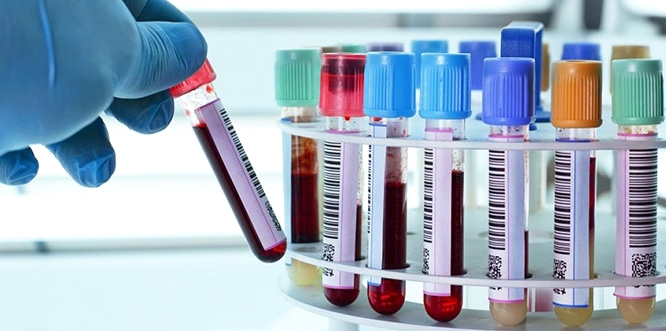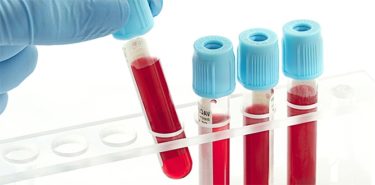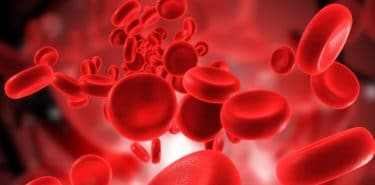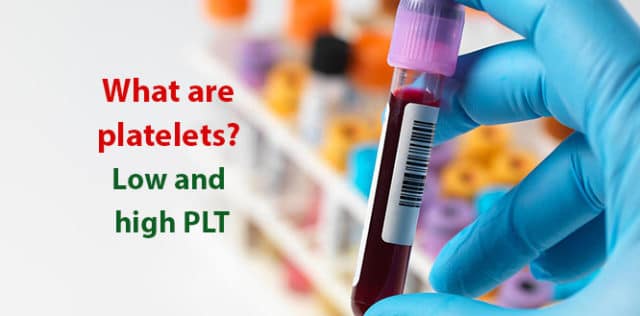 Platelets are cells produced by the bone marrow that stop the bleeding by initiating clotting in the blood when blood vessels are damaged. Their amounts in the blood can be reduced or increased depending on different factors. When the number of thrombocytes (Platelets, T) is higher or lower than they should be, a number of problems and complications may occur. For example, its high level may cause heart attack and cerebral palsy. Blood platelet count is usually measured by whole blood count (Hemogram) tests. According to the test results, doctors can initiate the treatment process.
Platelets are cells produced by the bone marrow that stop the bleeding by initiating clotting in the blood when blood vessels are damaged. Their amounts in the blood can be reduced or increased depending on different factors. When the number of thrombocytes (Platelets, T) is higher or lower than they should be, a number of problems and complications may occur. For example, its high level may cause heart attack and cerebral palsy. Blood platelet count is usually measured by whole blood count (Hemogram) tests. According to the test results, doctors can initiate the treatment process.
Table of Contents
What are platelets (PLT)?
Platelets (PLT or T) are small blood cells produced by the bone marrow like red and white blood cells that prevent bleeding by allowing blood clotting. These colorless blood cells stop bleeding by clumping if blood vessels are injured. They are produced by cells called megacoryocytes in the bone marrow. The smallest of our blood cells are platelets. They look like a small plate under a microscope.
Platelets are seedless cells. They consist of parts of bone marrow cells. Their amounts in the blood are controlled by the liver. Life span of those involved in blood circulation varies between 8-10 days. When they complete their tasks, they are broken down by the spleen, separated and thrown out.
What do platelets do?
If one of the blood vessels is damaged, the platelets receive the signal. After having received the signal, platelets run to the site of injury, and initiate clotting. First, they are interconnected where the damaged blood vessel is located.
They then spread to the surface of the blood vessel and stop the bleeding. They come to the wounded area, adhere to it and grow like a spider. During the clustering process, they send signals to others in order to increase aggregation.
What is platelet count?
The number of platelets in the blood can be determined by the platelet count. PLT is performed as a part of a complete blood count test (CBC). First, a sufficient amount of blood is transferred to the tubes and erythrocytes in the blood are hemolyzed. The remaining platelets are then counted by optical counters. Blood count must be done on an empty stomach. Some situations, such as clustering, can cause test results to fail.
What is the normal platelet count?
The value of platelets in healthy people, is between 150-450 thousands per microliter. Their presence of more than 450 thousands in the blood is called thrombocytosis. It is called thrombocytopenia under 150 thousands. When the platelet count falls below 10-20 thousands, there is a risk of spontaneous bleeding. If the blood vessel is damaged, its number is less than 50 thousands, which can lead to extremely serious bleeding.
Low platelet count (Thrombocytopenia)
Causes of thrombocytopenia
Low platelet count is a condition in which the total number of platelets in the blood is low. It may be mild or moderate. If untreated, it can have fatal consequences. It usually develops due to leukemia or the use of certain drugs. It can happen to everyone.
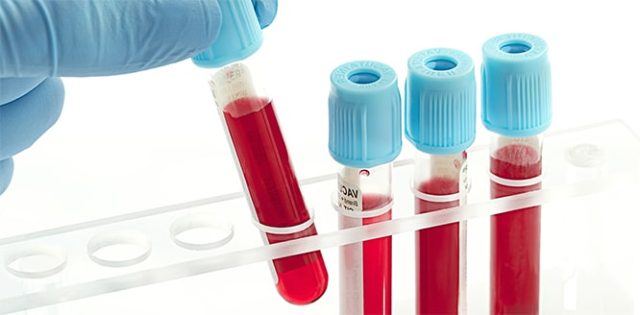
Bone marrow problems
Bone marrow is a spongy tissue in the bone, and produces blood components. The most important cause of thrombocytopenia is the insufficient production of bone marrow. Excess anemia, vitamin B12 deficiency, iron and folate deficiency, cirrhosis, leukemia, heavy alcohol consumption, chemotherapy, exposure to chemicals and radiation, HIV, chicken pox, viral infections and myelodysplasia may lead to insufficient production of platelets by the bone marrow.
Platelet destruction
Regular use of certain drugs such as anti-seizure and diuretic drugs, etc. may lead to platelet destruction. Spleen enlargement, pregnancy, a bacterial infection in the blood, hemolytic uremic syndrome, autoimmune disorders such as rheumatoid arthritis, and thrombotic thrombocytopenic purpura are the most important causes of platelet destruction.
Hemolytic uremic syndrome: It is a rare disease that causes the destruction of red blood cells, loss of function in the kidneys and a decrease in the amount of platelets. It resembles to E. coli infection that enters the body after consumption of raw or undercooked meat.
Spleen enlargement
The spleen is an important organ that separates unwanted substances from the blood. Spleen enlargement means that plenty of platelets is housed in the spleen. In this case, the number of circulating blood is indirectly reduced.
Thrombocytopenic purpura
It is a disease accompanied by blood destruction and decreased blood platelets, together with fever, renal failure and some neurological effects. Drowsiness, coma, partial paralysis may be observed. If the disease is not treated in time, it is highly likely to cause death.
Symptoms of low platelets
- Red, purple, brown bruises called purpura,
- Bleeding gums,
- Nose bleeding,
- Bleeding in the rectum,
- Blood in urine (sign of internal bleeding)
- Blood in the stool (a sign of internal bleeding)
- Severe menstruation,
- Bleeding in long-standing, non-healing wounds,
- Small, red, purple rashes called Petechiae,
- Bloody or very dark mucus (a sign of internal bleeding)
Mild cases, such as pregnancy, do not cause serious symptoms. However, serious cases may require urgent medical attention.
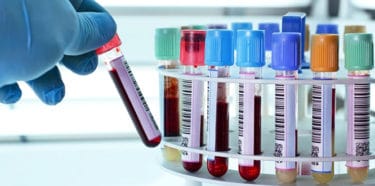
Is thrombocytopenia dangerous?
When the platelet count falls below 10,000 per microliters, it can cause dangerous internal bleeding. In cases of severe thrombocytopenia, however rarely, cerebral hemorrhage may occur. If your platelet count is low, you should see a doctor immediately when you experience headaches or any neurological problems.
How to raise platelets naturally?
Thrombocytes can be elevated by limiting alcohol consumption, discontinuing the use of drugs such as aspirin and ibuprofen, and avoiding contact sports and activities that can cause high bleeding or bruising.
Treatment of low platelets
Treatment may vary depending on the underlying cause of low platelets. First, the disease that leads to a low level of platelets should be treated. In case of a mild level, your doctor will monitor your condition and continue treatment. Medical treatment may be mandatory in the severe case of low platelets.
Medical treatment of thrombocytopenia
The method of treatment may vary depending on the cause of thrombocytopenia. Depending on the situation, one or more of the following treatments may be recommended:
- Replacement of drugs leading to thrombocytopenia
- Prescribing drugs such as steroid, corticosteoride, globulin and so on.
- Surgical removal of the spleen
- Blood or platelet transfusion (red blood cells are transferred to the lost blood)
- Prescription of immunosuppressive drugs
- Plasma exchange (this method is used in the treatment of thrombocytopenic purpura)
Foods to increase platelets
Citrus fruits rich in vitamin C, spinach, Indian Gooseberry, beets, papaya, Aloe Vera gel, pumpkin, raspberries, lean protein sources rich in B12, foods rich in vitamin A are among the platelet raising foods.
High platelets count (Thrombocytosis)
Causes of thrombocytosis
Thrombocytosis is a condition, which the body produces too much platelet. Infection-induced ones are called secondary thrombocytosis. The absence of any cause behind thrombocytosis is called primary thrombocythemia. This is usually caused by blood or bone marrow disease.
What diseases cause thrombocytosis?
Secondary thrombocytosis
It is related to an underlying problem. Autoimmune disorders such as cancer, iron deficiency, hemolytic anemia, some infections, acute bleeding and blood loss, surgical traumas, rheumatoid arthritis and so on., or inflammatory disorders such as removal of the spleen, inflammatory bowel disease, etc. may lead to secondary thrombocytosis.
Primary thrombocythemia
It is usually caused by mutations in some genes. Platelets produced by the bone marrow are usually abnormal. It can cause more serious blood clotting and bleeding complications. According to the MPN Research Foundation, most patients with primary thrombocythemia have a JAK2 gene mutation. It is more common in women over the age of 50, but may also affect young people.
Symptoms of high platelets
- Headache
- Dizziness or loss of balance
- Chest Pain
- Fainting
- Temporary vision changes
- Numbness or tingling of hands and feet
- Redness, throbbing and burning sensation in the hands and feet (erythromelalgia)
Symptoms depend on where clots occur:
Sometimes patients do not have any symptoms. The first sign of your disease may be a blood clot formation (thrombus). These clots can develop anywhere in your body, but primary thrombocythemia usually occurs in the brain, hands and feet. Rarely, if the blood count is too high (more than 1 million per microliter of blood), primary thrombocythemia may cause bleeding as follows:
- Nosebleeds
- Bruising
- Bleeding in your mouth or gums
- Bloody stool
If blood clots occur in the arteries supplying the brain, the blood flow to a part of the brain is temporarily interrupted. This may also cause transient ischemic attack or stroke. The symptoms of transient ischemic attack or paralysis develop suddenly and are:
- Weakness or numbness on one side of your body, usually your face, arm or leg
- Difficulty in speaking or understanding (aphasia)
- Blurred, double or low vision
Is high platelets dangerous?
Patients with primary thrombocythemia may experience transient erythema attacks and paralysis due to high platelets. At the same time, these patients are at risk of having a heart attack. People who experience heart attacks, strokes or severe bleeding should seek medical attention immediately.
Diagnosis of high platelets
Your doctor may check the size of your spleen or look for signs of infection. With the full blood count test, he/she can detect whether the platelet amount in your blood is higher than normal. He/she can also take tissue samples from your bone marrow for further testing.
Treatment of high platelets
Treatment of high primary or secondary platelets may vary.
Secondary thrombocytosis treatment
Treatment depends on the cause of thrombocytosis. In the event of blood loss due to surgery or injury, a large amount of coagulation dissolves on its own. The problem is resolved by the treatment of the disease in the case of a chronic discomfort or inflammatory disease-induced thrombocytosis.
If the spleen is removed, you may have to live with a high platelet amount for the rest of your life. However, no additional treatment is needed in this case.
Primary thrombocytosis treatment
Treatment is determined depending on your risk of developing blood clots. Your doctor may prefer only to monitor your condition if there are no symptoms or risks. However, patients over 60 years of age who smoke, have diabetes or any cardiovascular disease, and who have a history of bleeding or blood clotting must be treated.
In this case, low-dose aspirin is usually prescribed. Your doctor may also prescribe certain medications that reduce clotting and slow down thrombsite production. He/she may also choose to remove excess platelets from your blood by a procedure called platelet perineosis.
If you have recently been diagnosed with primary thrombocythemia, you should first quit smoking. In addition, if you have a problem with cholesterol, diabetes or blood pressure, you should exercise regularly and follow a diet of fruits, vegetables, whole grains and lean protein sources.
Foods that lower platelets
Omega-3 fatty acids, garlic, cumin, cloves, turmeric are among the most important foods that reduce the amount of platelets in the blood.
Platelet donation
Platelet donation can be performed by anyone in the 18-60 age range. The donation takes approximately 1.5 hours, and has no side effects. The platelet donor must weigh at least 50 kg. The number of platelets should be over 150 thousands. All requirements that are asked for a standard blood donation also apply to platelet donation.
The patient should be in good health, and the vascular structure should be appropriate for donation. While the blood groups of the platelet donor and recipient should be the same as a first priority, people who have a different blood group than the recipient may also donate. The platelet donor should discontinue the use of aspirin and aspirin derivatives at least 48 hours before the procedure. Platelet apheresis can be performed at least 4 weeks after whole blood donation. The patient can donate whole blood at least 48 hours after the apheresis procedure. Sets used during platelet donation are disposable.
References: 1- What are Platelets? 2- Platelet Disorders 3- Thrombocytosis

